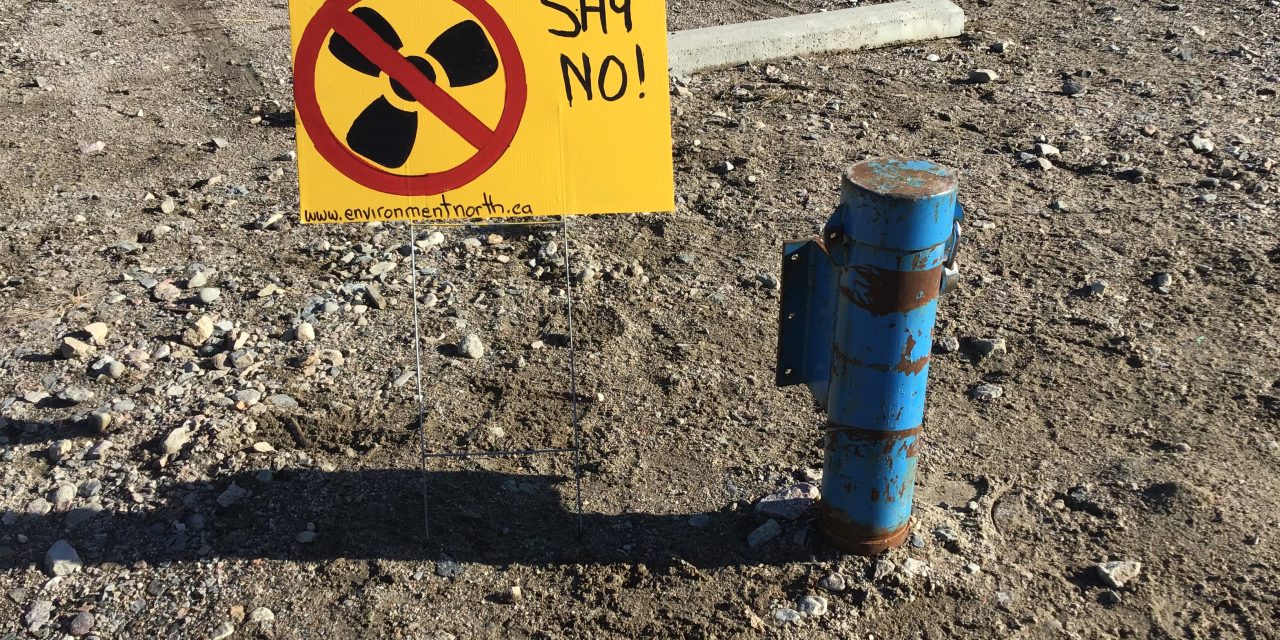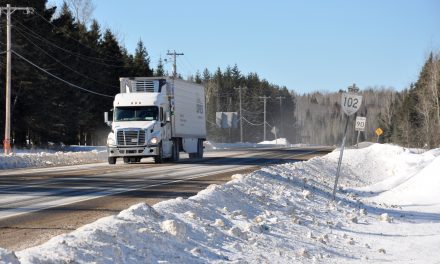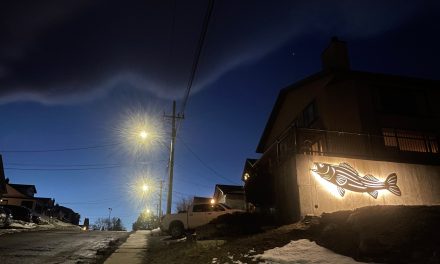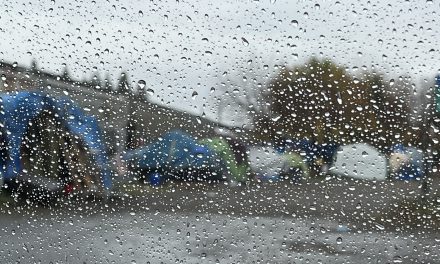By Brennain Lloyd and Julee Boan
Have you been driving the highways of Northwestern Ontario this winter? Does white knuckling over black ice get your heart pumping faster than a shot of espresso from the St Paul Roastery? Thanks to the Nuclear Waste Management Organization (NWMO), travel in our region could get a lot more exciting.
Before the end of this year, the NWMO says they will be selecting their preferred location for a deep geological repository for all of Canada’s high-level radioactive waste. If they choose their candidate site between Ignace and Dryden, two or more trucks per day will travel through Thunder Bay for at least 50 years, each of them hauling 35-tonne containers of highly radioactive nuclear waste. If all goes well, bystanders and fellow travellers will receive only low doses of radiation with each passing truck. If things go less well, consequences could be much more severe.
The NWMO’s plan is a package deal: long-distance transportation of five million “bundles” of radioactive fuel waste, a processing plant where the radioactive waste containers would be opened and the bundles transferred into copper-coated steel tubes, and a repository deep underground comprising a warren of tunnels and rooms too radioactive to allow human entry. And then the kicker: the radioactive wastes will be abandoned when the NWMO walks away, according to plan, from materials that will remain harmful for tens of thousands of years. It’s the gift that will keep on giving.
Speaking of gifts, the NWMO has entered into a series of agreements with the Township of Ignace (population 1,200), designating it as a potential “host community.” They would also need agreement from Wabigoon Lake Ojibway Nation, but we’ll focus on Ignace here because there is more information available about that process. According to the NWMO, they will only proceed with their nuclear waste burial scheme in a community that is “informed and willing,” but they have left it to Ignace to decide how that “willingness” will be measured. In a resolution passed in December 2021, Ignace township council declared that the council would make that decision—five people.
They have since added some bells and whistles, with consultants recently hired to “engage” and “listen” before reporting to a “willingness committee” (not yet in place) which will then make a recommendation to the Ignace council. Then, the council itself will decide if the township is willing to have a site 45 kilometres down the road and in a different watershed be the end-point for all of Canada’s high-level nuclear waste. At last estimate, the Township of Ignace was well on its way to the $10 million mark for money gifted by the NWMO, with more to come due to an extended funding agreement. Is the NWMO attempting to buy “willingness”?
The transportation risks are real. While the nuclear industry and the regulator dismiss the low levels of radiation that will emanate from each shipment as being “below regulatory levels,” the calculations are based on several assumptions that might or might not be borne out. Exposures will increase for those sharing the road or the roadside stop in each and every instance of a truck being halted or slowed by an accident, construction, a forest fire, inclement weather, vehicle failure, or even driver fatigue. If a container is breached in an accident, the results could be catastrophic.
Again, the nuclear industry and regulator dismiss such concerns, boasting of international standards and describing tough safety tests. But a 2021 Access to Information request by environmental protection advocates Northwatch to the Canadian Nuclear Safety Commission about container testing recently revealed that the used fuel transportation package has not been subject to any full-scale testing, and the tests for fire and water immersion can be substituted with computer calculations.
On the face of it, it’s an absurd proposition. The upcoming decision will affect hundreds of communities and millions of people along the transportation route, as well as those living in the proposed project’s vicinity and everyone downstream, but these people are not being asked about their “willingness.” Thunder Bay residents have not been asked if they want to take on this nuclear risk for a half-century or more to accommodate decisions made a half-century ago to use nuclear power to generate electricity for southern Ontario.
But hey, what could go wrong?
Don’t wait to be asked. Let the NWMO and Thunder Bay city council know that you are “informed and unwilling.”














